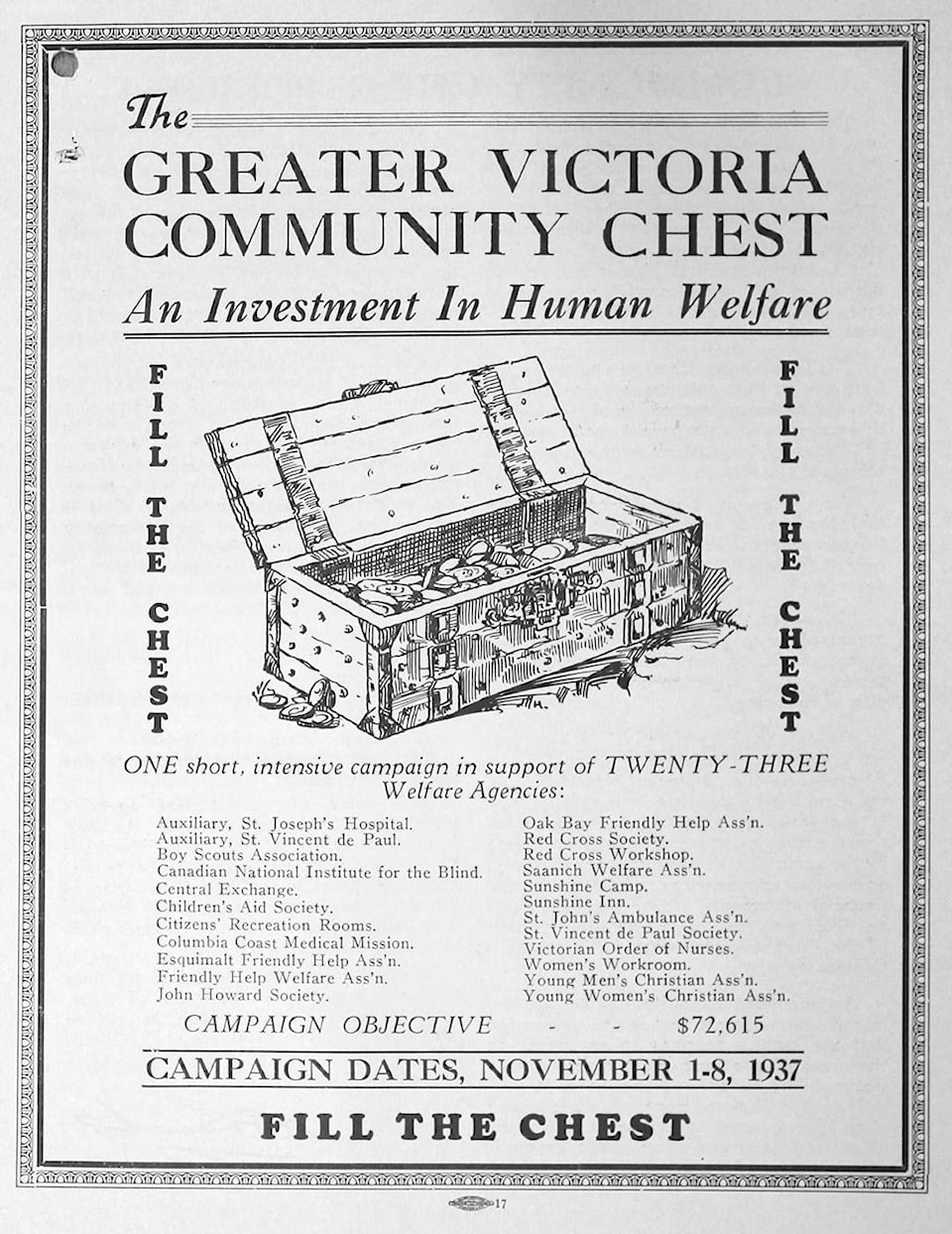By Ivan Watson
For Black Press
From the window of his top floor office at Royal Trust Headquarters on Government Street, F.E. Winslow viewed with concern the bread lines that snaked along Victoria’s crowded downtown streets. Each day, hundreds of men, women, and children huddled together for warmth and comfort, clinging to worn work boots and fraying wool coats. Red Cross nurses offered tea and a sympathetic ear, but the Great Depression’s epidemic of poverty and homelessness in 1930s Victoria threatened to overwhelm the coping abilities of local authorities and the makeshift network of soup kitchens set up by well-meaning social workers.
In the era before a social safety net – the ‘destitute’, ‘aged,’ ‘vulnerable’ and ‘unemployed’ relied on a patchwork front-line defence of family, friends, church, welfare agencies and Christian charity. Proper pensions, unemployment insurance, Medicare, government grants and corporate social responsibility, were all ideas for the future. If people couldn’t afford food, they couldn’t afford to donate to charity – and welfare agencies in the Depression years were threatened with closure at the time when the community needed them most.
Winslow took action. A successful banker descended from a prominent loyalist family, he believed that society had a responsibility to provide for its most vulnerable citizens. Taking a deep breath, he adjusted the buttons on his waistcoat and buzzed his secretary, telling her to hold all appointments for the rest of the day. Picking up the receiver of his polished black rotary telephone, he scoured his rolodex and began dialling the numbers of close friends and business associates to ask for their help.
His gentlemanly powers of persuasion combined with stark evidence of suffering in plain sight on Victoria’s streets made a compelling case for people to open their hearts and their wallets. Within hours, Winslow secured pledges from his society friends for a new ‘Citizens’ Relief Fund’ to help unemployed families with essentials including rent, medical and health supplies and clothing. By fall 1931, the fund had raised $60,000 – an enormous sum for the era. Encouraged, but mindful of financial realities, Winslow understood that Victoria needed more than a one-off fundraising effort. He believed that lasting change required a charitable revolution in both thinking and structure that would meet community needs year after year by harnessing the combined forces of the city’s welfare agencies working together for the common good.
The idea was not original – it didn’t need to be. In America after the Great War fundraising federations called ‘Community Chests’ (later renamed ‘United Ways’) had proven successful in transforming charitable giving. In Canada, Toronto, Montreal, Halifax, Vancouver and other cities had followed the American lead and formed a fledging community chest movement that harnessed the spirit of community self-reliance, compassionate concern for the needs of the most vulnerable and the conviction that welfare agencies could raise more money and maximize their impact through combined business practices, rather than competitive operations. Instead of dozens of community agencies repeatedly asking people for donations, community chests instituted one ask, once a year, for all agencies. Funds were raised at a much lower cost than if each agency raised money individually. With fundraising combined with prudent social planning, more money got to where it was needed most and more people received the help they needed to survive and thrive. Repeated annually, community chest campaigns provided stable long-term funding for a strong network of community welfare agencies and social services.
In June 1936, an organization meeting for a Council of Social Agencies was held with Winslow elected president. In November, the council hosted a major social work conference held in partnership with the Canadian Welfare Council, which was working to advance community chests across the country. In early 1937, the council drafted plans for a federated fundraising campaign under the auspices of the Winslow-led ‘Greater Victoria Community Chest’ from Nov. 1 to 8.
Twenty three social service agencies participated in Victoria’s first campaign, including Red Cross, Children’s Aid Society, Boy Scouts, St. Vincent de Paul, Victorian Order of Nurses, St. John’s Ambulance, YMCA/YWCA, Canadian National Institute for the Blind and others. The campaign goal of $72,600 represented the combined budgets of participating agencies, after a thorough review to trim expenditures and eliminate unnecessary overlap. Without government grants or private sector funding, the community chest campaign aimed to cover 100 percent of the budgets of member agencies through voluntary, individual charitable giving. The stakes were high – Victoria’s most vulnerable citizens relied on the campaign’s success for essential needs and agencies would sink or swim based on total dollars raised.
Canvassers fanned out across the city. Radio and newspapers provided updates as donations poured into campaign headquarters. With all results in, an excited Winslow announced that Victoria’s first campaign had gone “over the top” raising $86,200 and exceeding goal by an impressive $13,600. Victoria’s charity revolution proved a decisive success.
In 2017, United Way Greater Victoria celebrates 80 years of building strong and inclusive communities—neighbourhood by neighbourhood and generation after generation. With the first $86,200 raised in 1937, Winslow and his team of maverick philanthropists pioneered a charitable revolution that continues to pay social dividends. Today’s United Way raises over $5 million annually to support a strong network of community partners and vital social services fostering systemic, long-term change. The return on investment on a dollar invested in United Way from 1937 to 2017? Priceless.
Ivan Watson is vice-chair of United Way Greater Victoria and former national board member of United Way/Centraide Canada. Email: watsoni@yahoo.com
